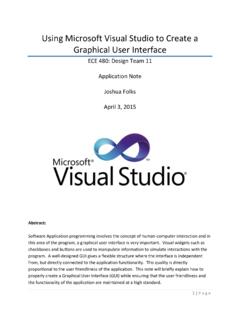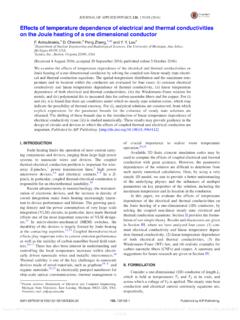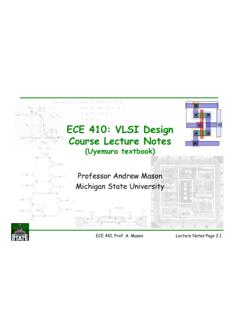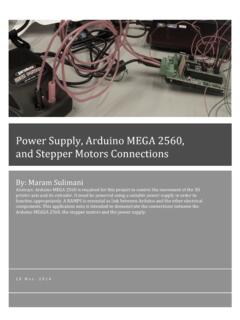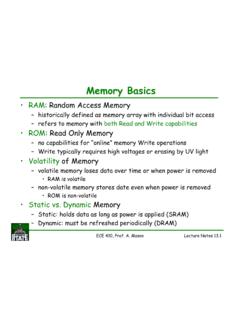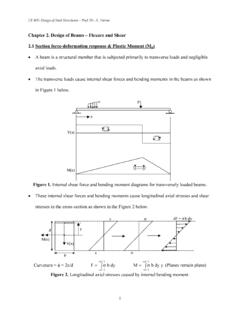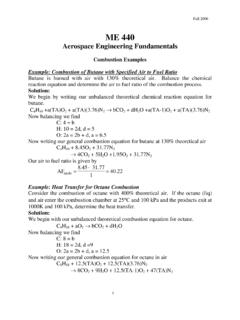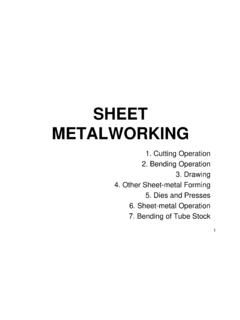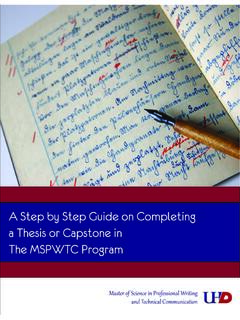Transcription of How to Implement a MOSFET with a Gate Driver
1 How to Implement a MOSFET with a Gate Driver ECE 480 Team 8 Luis Kalaff Table of content Abstract ---------------------------------------- -------------------------- page 3 Keywords ---------------------------------------- ------------------------ page 3 Introduction ---------------------------------------- ---------------------- pages 3-4 Objective ---------------------------------------- ------------------------- page 5 Requirement to choose a MOSFET ------------------------------- page 5-6 Implementation of a Gate Driver ------------------------------------ page 7-8 Conclusion ---------------------------------------- ------------------------ page 8 References ---------------------------------------- ------------------------ page 9 Abstract In most applications, a system is in need of a switch to be able to work correctly.
2 Since there is no ideal switches, most of the time, the component chosen for this task is a MOSFET . A MOSFET usually needs a gate Driver to do the on/off operation at the desired frequency. For high frequencies, MOSFETs require a gate drive circuit to translate the on/off signals from an analog or digital controller into the power signals necessary to control the MOSFET . The main purpose of this paper is to demonstrate a systematic approach to design high performance gate drive circuits for high speed switching applications such as power conversion applications.
3 Key Words: MOSFET , Gate Capacitance, Gate, Source, Drain, Bulk, Switching Frequency, Junction. Introduction A MOSFET is an acronym for metal-oxide semiconductor field-effect transistor. It is a special type of field-effect transistor (FET) and is the key component in high frequency, high efficiency switching applications across the electronics industry. A MOSFET is a voltage controlled device. It has four terminals: a gate, a drain, a source and bulk. The source and drain are the terminals through which the current flows.
4 The gate and bulk voltages control the current. There needs to be a certain gate-to-source voltage, called threshold voltage, in order for the MOSFET to turn on. However the isolated gate-electrode of the MOSFET forms a capacitor, called gate capacitor, which must be charged or discharged each time the MOSFET is switched on or off respectively . As a transistor requires a particular gate voltage in order to switch on, the gate capacitor must be charged to at least the required gate voltage for the transistor to be switched on.
5 Similarly, to switch the transistor off, this charge must be dissipated meaning that the gate capacitor must be discharged. This is why a gate Driver is usually needed, especially for high frequencies. A gate Driver is a power amplifier that accepts a low-power input from a controller IC and produces a high-current drive input for the gate of a high-power transistor such as a power MOSFET . Objective The focus of this topic is the gate drive and MOSFET requirements to make a proper switch for power conversion applications.
6 How to choose a proper MOSFET There are two sets of requirement to choose a MOSFET for a given circuit: operating requirements, which ensure proper operation, and performance requirements, which reduce device losses as much as possible. Let s discuss the operating requirements first. The MOSFET needs to be able to handle the peak current of the circuit keeping in mind that the current rating decreases with increasing temperature. The Drain-Source voltage of the MOSFET has to handle the maximum voltage supplied.
7 Also this voltage rating varies with the temperature. The threshold voltage of the MOSFET must be less than both the input voltage and the maximum gate-source voltage specified in the datasheet. The MOSFET needs to operate within its SOA (Safe Operating Area). This is where the performance requirements coming in. The SOA is defined by the junction temperature, the breakdown voltage and the maximum drain current. In order for the MOSFET to work properly losses have to be minimal for a specific thermal junction.
8 There are two types of losses: conduction and switching losses. First, switching losses will be discussed. A MOSFET has various internal capacitors that play a big part on the switching operations. The values of these capacitors can be found by looking at the datasheet and using the following equations: Another parameter to look for is the total gate charge. Along with the switching frequency this will give you the current needed to charge the gate capacitance of the MOSFET . The higher the gate charge, the higher the dissipation losses.
9 Switching losses are also affected by the drain-source voltage, the drain current, the switching frequency and the rise and fall times. Conduction losses are the second type of losses. The MOSFET has a small drain-source on resistance. This is one of the most crucial parameters. It has to be as low as possible. These two types of losses are dissipated as heat, increasing the junction temperature. The manufacturer specifies the maximum junction temperature (usually 150-200 Celsius) that the MOSFET can handle.
10 There is a maximum power dissipation for a given maximum junction temperature. Gate Driver A MOSFET Driver IC translates TTL or CMOS logical signals, to a higher voltage and higher current, with the goal of rapidly and completely switching the gate of a MOSFET . An output pin of a microcontroller is usually adequate to drive a small-signal logic level MOSFET . However driving larger MOSFETs is a different story. Large MOSFETs have higher gate capacitance. Digital signals are meant to drive small loads (on the order of 10-100pF).
